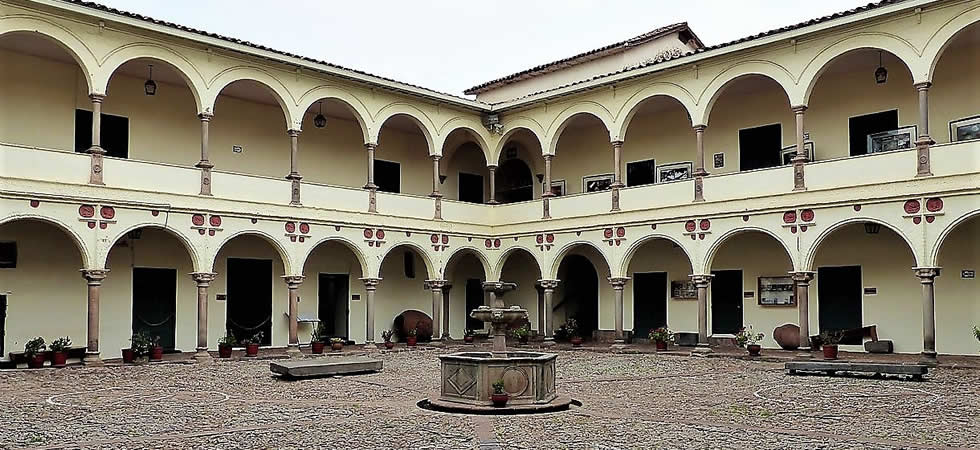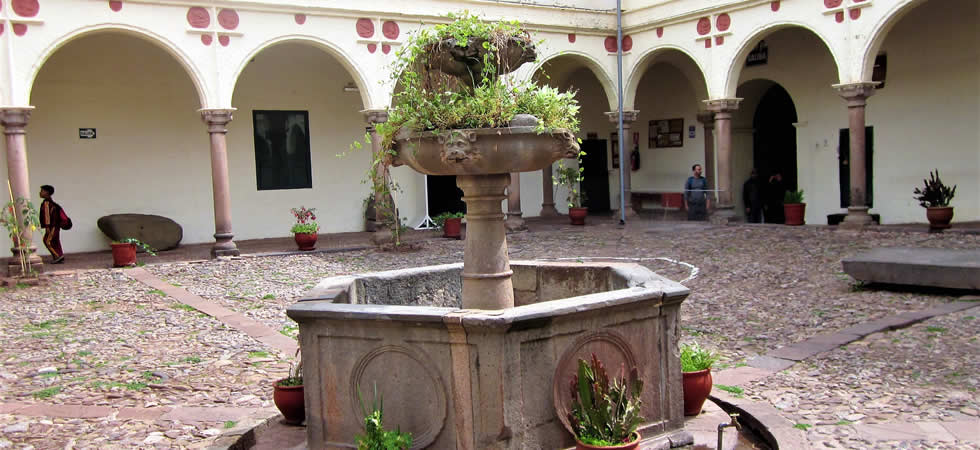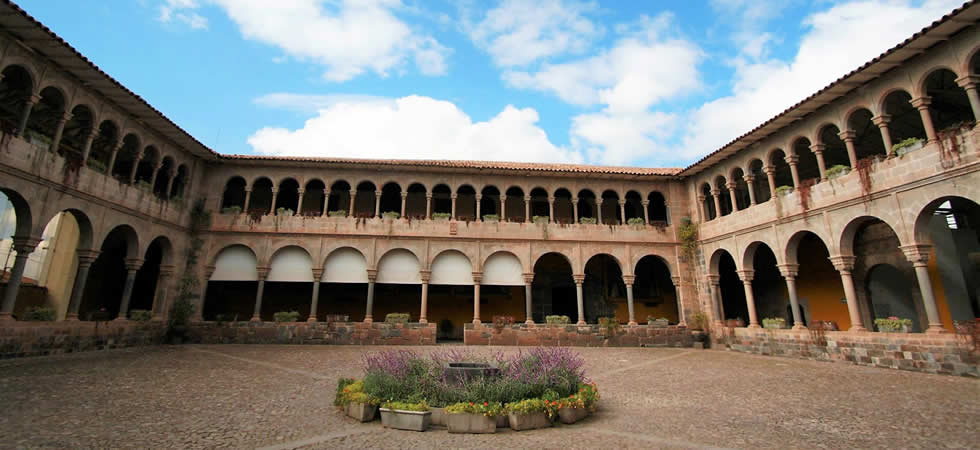Cusco is home to many museums showcasing the city's rich history and culture. Some of the most notable include the Inca Museum, dedicated to the Inca civilization and features a collection of artifacts and textiles from the Inca era.
Another famous museum is the Museum of Religious Art, which displays a collection of colonial-era religious art and artifacts, including paintings, sculptures, and altarpieces. The Museum of Popular Art is another interesting museum; it showcases Cusco's traditional and contemporary art, including textiles, ceramics, and other crafts. Finally, the Museum of Contemporary Art, or MAC, exhibits the works of local and international artists, focusing on contemporary art.
Additionally, there are museums dedicated to specific themes, such as the Museum of Traditional Medicine, which explores the traditional Inca medical practices, and the Museum of Inca Textiles, which showcases the intricate textiles made by the Incas. Many of these museums offer guided tours in various languages, and most have an entrance fee. Visiting these museums is an excellent way to learn about Cusco's history and culture and appreciate the city's art and artifacts.

Museums in Cusco Peru
Inca Museum
The Inca Museum from the University San Antonio de Abad (UNSAAC), also known as the Museo Inka, is a must-see attraction for anyone interested in the history and culture of the Inca civilization. The museum features a collection of artifacts and textiles from the Inca era. The museum was opened in 1996, and it's considered one of the most important museums in Cusco.
Inside the museum, you can see several works of art, such as the famous "Kero", a ceremonial vessel used by the Incas in their rituals. The museum also features a collection of Inca textiles, including intricate weavings and embroideries, and a collection of ceramics, metalwork, and stone carvings. The museum also has a collection of dioramas that depict Inca life, including agricultural practices, social organization, and religious beliefs.
To visit the Inca Museum, you can purchase a ticket at the entrance, which will give you access to the main halls and the exhibits. The Inca museum is located in the Admiral's House, an important monument of colonial architecture, at a stone’s throw from the Plaza de Armas.

Inca Museum
Museo de Arte Religioso
The Museum of Religious Art (Museo de Arte Religioso) is a beautiful museum dedicated to the city's colonial-era religious art and artifacts. It features a collection of paintings, sculptures, altarpieces, and other works. The museum was established in the early 20th century and is considered one of Cusco's most important museums.
The museum also features a collection of colonial-era sculptures, altarpieces, and a collection of retablos, which are elaborate altarpieces made of several levels, each with its own painting, sculpture, or carving. The museum has a stone perimeter wall. Inside, there is a large Renaissance patio with stone arches and tiles on the walls, and is adorned in the middle by the stately pool located in a preferential place. The museum is located at the corner of the Calle Hatunrumiyoq (the street with the Stone of the 12 Angles).
Museo de Arte Popular
The Museum of Popular Art or Museo de Arte Popular, is dedicated to showcasing the traditional and contemporary art of Cusco, including textiles, ceramics and other crafts as popular masks and more. The museum was established in the late 20th century.
Inside the museum, you can see several works of art, such as the famous "Chakana" a traditional textile that represents the Inca Cosmo vision. The museum also features a collection of ceramics, metalwork, and stone carvings, as well as a collection of contemporary art, which showcases the work of local artists who are keeping the traditional techniques alive.
To visit the Museum of Popular Art, you can purchase a ticket at the entrance, which will give you access to the main halls and the exhibits. The museum is located in the city center on the Avda. del Sol.
Museum of Contemporary Art
The Museum of Contemporary Art in Cusco, also known as MUSAC, is a must-see for art lovers visiting Cusco. The museum showcases a diverse collection of contemporary art from local and international artists, focusing on works from the Andean region. Some of the collection's highlights include sculptures, paintings, and installations that explore indigenous culture, social and political issues, and the environment.
In addition to the permanent collection, MUSAC also hosts temporary exhibitions and educational programs. The museum is housed in a beautiful colonial-style building that was once a seminary; you can also enjoy the views of the city from the museum's terrace.
MUSAC is open from Tuesday to Sunday from 10:00 am to 6:00 pm, and admission is free. The history of the Museum of Contemporary Art in Cusco began in 2018. It's a space for contemporary art's promotion, diffusion, and production. The MUSAC is a public-private initiative that was created to promote the development of contemporary art in the region and make it accessible to a broad audience.
The Contemporary Art Museum is located in the City of Cusco in Plaza Recogijo, the square adjoining Plaza de Armas of Cusco.

Inca Museum Cusco Peru
Museum of Pre-Columbian Art (MAP)
The Museum of Precolumbian Art in Cusco (also known as MAP) is a must-see destination for visitors interested in the art and culture of the ancient Andean civilizations.
The museum houses a collection of more than 4,000 artifacts dating from the pre-Inca period to the Inca Empire. Visitors can see various objects, including ceramics, textiles, metalwork, and stone carvings. In addition, there is a collection of pieces from different cultures, such as Chavin, Nazca, Mochica, Inca, Wari, and Tiahuanaco, among others. The MAP also has several rooms of temporary exhibitions, an auditorium, a library, and a research center, which allows visitors to learn about the history of the ancient cultures of the Andes through their art.
The history of the Museum of Precolumbian Art in Cusco began in 2003, and it's one of the most important museums in the region. It is a public-private initiative created to promote the development of Precolumbian art in the area and make it accessible to a broad audience. There is also a lovely café, MAP Café.
The Pre-Columbian Art Museum is located in “La Casa Cabrera” (Plaza Nazarenas). In Incan times, this house was a ceremonial 'kancha' (patio); in 1580, it would become the mansion of the conquistador Alonso Díaz and, in 1850, that of Count Cabrera. The residence was restored as the "Museum of Pre-Columbian Art or Museum of Pre-Hispanic Art" in June 2003. It is the only museum dedicated to recovering the art of the cultures of ancient Peru.
The Choco Museum
The Choco Museum in Cusco is a unique museum that explores chocolate's history, culture, and art. The museum shows the traditional methods of chocolate-making and their importance in the Andean culture. Visitors can learn about the history of chocolate, from its origins in Mesoamerica to its arrival in the Andes, and discover how chocolate was used in ancient Andean cultures.
The museum offers visitors the opportunity to learn about the chocolate-making process, from cultivating cocoa trees to producing chocolate. You can taste different varieties of chocolate and learn about the different flavors and aromas. Additionally, the museum has a chocolate shop where visitors can purchase various chocolate and cocoa-based products.
The Choco Museum is open from Monday to Sunday from 9:00 am to 6:00 pm. Admission to the museum is free. The guided tour includes a demonstration of the traditional chocolate-making process and a tasting of different types of chocolate.

Cusco Museums
The Coca Museum
The Coca Museum explores the history and culture of the coca leaves and their use in the Andean region. You will learn about the traditional methods of cultivating and how the locals use the coca leaves and their cultural and economic importance in the Andes.
The museum offers the opportunity to learn about the cultivation of the coca plant, from planting to harvesting, and the traditional methods of processing the leaves. You'll see the different ways the leaves are used, including in traditional medicine, religious ceremonies, and as a stimulant.
Additionally, the museum has a shop where visitors can purchase different coca-based products such as tea, toothpaste and candies. The Coca Museum is open from Monday to Sunday from 9:00 am to 6:00 pm. Admission to the museum is free. The museum is located at the Plaza San Blas.
The museum helps visitors understand the cultural and economic importance of the coca leaves in the Andean region. This museum aims to educate visitors about the multiple uses of coca leaves and their importance in the Andean culture; it also aims to demystify the misconceptions about this plant.
Museo Casa Concha
There are 360 pieces of Machu Picchu recently returned by Yale University that were found by Hiram Bingham, which Cusco residents and tourists can appreciate. They also show, on pedestals and showcases in two rooms on the second level, the ceramic, lithic, metallic pieces and bone remains found in the casa Concha excavations and some of the assets of the Inca museum.
The museum belongs to the University of San Antonio Abad. It is located in a beautiful place, notable for its picturesque balconies, that used to be the residence of José de Santiago de Concha, a prominent aristocrat during the early days of the conquest. One of his descendants, Martín Pío Concha, was the last governor of Spanish Cusco in the 19th century.
Museo de Sitio Coricancha
This small museum that has five rooms where the history of the ancestors who lived in these lands is explained didactically, with pre-Inca, Inca, and colonial pieces, mostly from the excavations carried out in the Koricancha (in Quechua Qorikancha, patio de oro"), during the period 1992-1995. It shows the chronological evolution of civilization in Cusco. It exhibits fragments and ceramics from the Inca period and samples of metallurgy, textiles, painting, sculpture, musical instruments, etc. It also presents a model of what could have been the Qoricancha. The museum is located next to Qoricancha on the Avda. Del Sol.

Museo de Sitio Coricancha
Museo Santa Catalina
The Monastery of Santa Catalina was founded in 1601 in the city of Arequipa, but it was soon transferred to Cusco due to a series of devastating natural catastrophes that occurred at the beginning of the 17th century. The foundation's initiative belonged to the widow Mrs. Lucía Rivera de Padilla, possessor of a great fortune. In February 1605, the first 25 professed nuns arrived in Cusco.
The museum offers exquisite colonial architecture that corresponds to the last stages of the Renaissance, with the presence of Roman-style arches. It has paintings from the Cusco school from the 17th and 18th centuries, huge tapestries from the colonial era, and, highlighting everything, the chapter house where you can admire the color of the colonial paintings.
The building that Santa Catalina currently occupies was called Acllawasi or “House of the Chosen” in Inca times. Here, the most beautiful women of the empire were secluded, while they had to dedicate to the cult of the Sun and to the service of the Inca, as well as textile work and cuisine.
Museo de Medicina Tradicional
The private museum exhibits a variety of native plants that have various scientific uses and in the pharmaceutical industry. The museum organizes scientific, cultural and artistic events and exhibitions. It offers information in support of scientific research and has a specialized library. The Andes and the Amazon are the regions with the greatest diversity of medicinal plants worldwide: more than 1,000 in the highlands and some 3,500 in the tropical forest. Traditional knowledge of its properties is equally extensive.
The tour begins by explaining the principles and conceptions of health and disease of the original populations of South America, to then reveal the history of the sacred leaf of the Incas, coca. Another room reveals the little-known history of tobacco, originally from South America, from its medical and religious function, to the abuse of smoking.
The museum also has a natural goods store with handicrafts, books, and art objects. Likewise, refreshments, snacks and natural products such as desserts and Amazonian fruit ice cream are offered. You can find the museum at Santa Teresa 351.
Textile Museum
This museum will allow you to appreciate all the steps of the process for the manufacture of garments with natural products and in a traditional way, just as the Andean inhabitants did hundreds of years ago. The process begins with obtaining the raw material (alpaca wool) to dyeing and spinning garments such as ponchos.
The Textile or Museum (or Center) (CTTC) is a non-profit organization established in 1996 by Andean weavers and their supporters. The mission is to help survive Cusqueñan textile traditions and to provide support to the indigenous people by selling their products in the museum shop, among others.
The Center works with different weaving communities from Cusco, most from Chincheros, on a fair-trade basis to help rescue traditions and promote the weavers and their work. Through community organization, workshops, and educational opportunities, the center ensures the future of local textile traditions. The museum is located on the Avda del Sol.